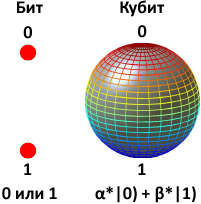D-Wave Systems computer breaks 1,000 qubits

D-Wave Systems succeeded in breaking the 1,000-qubit milestone for quantum computing. Now the system will be able to work on much more complex computational tasks.
With a thousand qubits, the processor simultaneously considers up to 2 1000 possible solutions.
 Qubit is a key component of a quantum computer. Due to the unique property of qubits, quantum superposition, the computational ability of quantum computers in some problems will be exponentially higher than that of binary ones. D-Wave Systems computers are sometimes called "fake quantum computers" due to the lack of versatility. However, these are the first quantum systems of this kind available on the market.
Qubit is a key component of a quantum computer. Due to the unique property of qubits, quantum superposition, the computational ability of quantum computers in some problems will be exponentially higher than that of binary ones. D-Wave Systems computers are sometimes called "fake quantum computers" due to the lack of versatility. However, these are the first quantum systems of this kind available on the market. Due to its analogous nature, the specific number of qubits varies from processor to D-Wave processor, but in any case there should be more than 1000. According to the project, the processor should ensure the availability of a region of 1152 qubits in a total canvas of 2048 qubits.
In addition to the number of qubits, other technical improvements were made: the new processor operates at a temperature even lower than its predecessor, which had a working temperature of 20 mK (millikelvin). With decreasing temperature, the amount of noise is reduced and the accuracy of control over the operation of the microcircuit increases: all this positively affects performance.
The processor with 128,000 Josephson contacts operating in the superconducting state, developers consider the most complex superconducting device ever placed on the surface of an integrated circuit.
The D-Wave system implements the quantum annealing (quantum normalization) algorithm, a general method for finding the global minimum of a given function among a set of candidate solutions. This rather specific task D-Wave solves orders of magnitude faster than a conventional computer.
